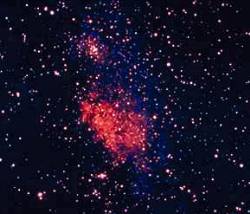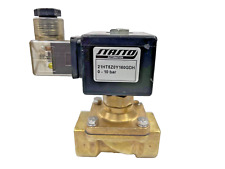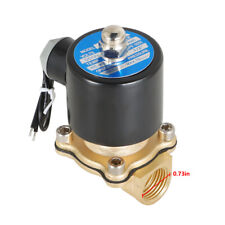
For the first time, scientists have identified and analyzed single grains of silicate stardust in the laboratory. This breakthrough, to be reported in the Feb. 27 issue of Science Express, provides a new way to study the history of the universe.
“Astronomers have been studying stardust through telescopes for decades,” said first author Scott Messenger, Ph.D., senior research scientist in the Laboratory for Space Sciences at Washington University in St. Louis. “And they have derived models of what it must be like, based on wiggles in their spectral recordings. But they never dreamed it would be possible to look this closely at a grain of stardust that has been floating around in the galaxy.”
Most stardust is made of tiny silicate grains, much like dust from rocks on earth. Away from city lights, you can see the dust as a dark band across the Milky Way. This dust comes from dying and exploded stars. Scientists think stars form when these dust clouds collapse and that some of this dust became trapped inside asteroids and comets when our own sun formed.
In 2001, with help from NASA and the National Science Foundation, Washington University bought a newly available and much more sensitive ion probe. Made by Cameca in Paris, the NanoSIMS probe can resolve particles as small as 100 nanometers in diameter. A million such particles side by side would make a centimeter. The grains in IDPs range from 100 to 500 nanometers. “So like the Hubble telescope, the NanoSIMS allows us to see things on a much finer scale than ever before,” Messenger said.
Lindsay P. Keller, Ph.D., at NASA’s Johnson Space Center in Houston, first examined thin slices of IDPs under the transmission electron microscope. He identified the chemical elements in single grains and determined whether the grains were crystals or coated with organic material.
Using the NanoSIMS probe, the Washington University investigators then measured the relative amounts of two isotopes of oxygen in more than a thousand grains from nine IDPs. The data told them which grains had come from stars. The researchers discovered the first grain of stardust in the first half hour of their first NanoSIMS session. “Finding something that people have been seeking for such a long time was incredibly exciting,” Messenger said.
Stardust was surprisingly common in the IDPs. “We found that 1 percent of the mass of these interplanetary dust particles was stardust,” Messenger explained. “So stardust is about 50 times as abundant in these particles as in meteorites, which suggests that it comes from far more primitive bodies.”
The isotopic measurements identified six stardust grains from outside our solar system. Three appeared to have come from red giants or asymptotic giant branch stars, two late stages in stellar evolution. A fourth was from a star containing little metal. The fifth and sixth possibly came from a metal-rich star or a supernova.
Although this work is just beginning, some novel findings have emerged. For example, one of the grains was crystalline, which contradicts the idea that silicate stardust grains are always amorphous. “A single grain of stardust can bring down a long-established theory,” Messenger said.
The researchers will probe the history of stardust with further studies of IDP chemistry and microstructure. “The interstellar medium plays an incredibly important role in star formation, but you can learn only so much by using a telescope,” Messenger said. “You can find out so much more by studying actual samples.”


















Comments are closed.